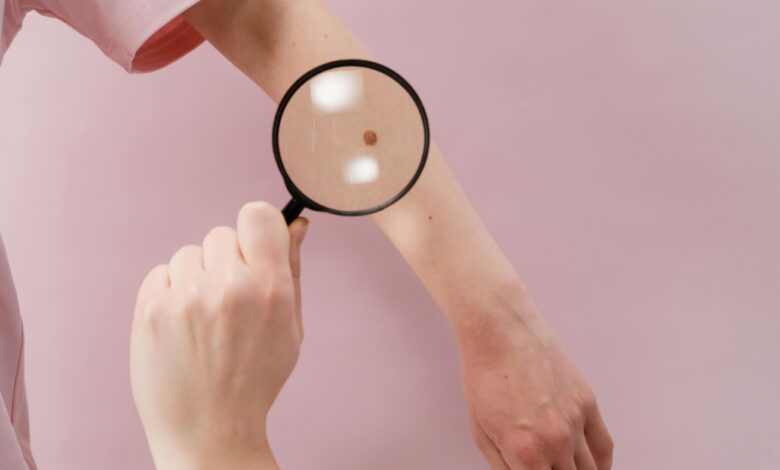How to Choose the Right Dermatologist for Skin Issues

Finding the right dermatologist is a crucial step in addressing skin issues effectively. Whether you’re dealing with acne, eczema, psoriasis, or more serious conditions like skin cancer, the expertise and approach of your dermatologist can significantly impact your treatment outcomes. This guide will walk you through the key factors to consider when choosing a dermatologist, ensuring you find a professional who meets your specific needs.
Why Choosing the Right Dermatologist Matters
Your skin is your body’s largest organ and plays a vital role in protecting you from environmental factors, regulating temperature, and maintaining overall health. A qualified dermatologist can:
- Diagnose and treat a wide range of skin conditions.
- Provide personalized care tailored to your skin type and concerns.
- Offer preventive advice to maintain healthy skin.
- Perform procedures like biopsies, laser treatments, or cosmetic enhancements.
Choosing the wrong dermatologist, on the other hand, can lead to misdiagnosis, ineffective treatments, or unnecessary expenses. That’s why it’s essential to take the time to research and select the best fit for your needs.
Step 1: Understand Your Skin Concerns
Before starting your search, identify the specific skin issue you want to address. Different dermatologists specialize in various areas, so knowing your needs will help narrow down your options:
- General Dermatology : Routine skin exams, acne, rashes, eczema, and psoriasis.
- Cosmetic Dermatology : Anti-aging treatments, Botox, fillers, laser resurfacing, and scar removal.
- Surgical Dermatology : Skin cancer removal, mole excisions, and other surgical procedures.
- Pediatric Dermatology : Skin conditions affecting infants, children, and teenagers.
- Dermatopathology : Diagnosis of skin diseases through microscopic examination.
For example, if you’re seeking treatment for melanoma, a dermatologist specializing in surgical or oncological dermatology may be more appropriate than one focused on cosmetic procedures.
Step 2: Verify Credentials and Qualifications
A dermatologist’s credentials are a strong indicator of their expertise and professionalism. Look for the following:
- Board Certification :
- In the U.S., ensure the dermatologist is certified by the American Board of Dermatology (ABD) or equivalent organizations in your country.
- Board certification confirms that the doctor has completed rigorous training and passed standardized exams.
- Medical School and Residency :
- Research where the dermatologist trained. Prestigious institutions often provide high-quality education and exposure to advanced techniques.
- Specialized Training :
- Some dermatologists pursue fellowships in subspecialties like dermatologic surgery or pediatric dermatology.
- Licensing :
- Check that the dermatologist holds a valid medical license in your state or country.
You can verify credentials through national medical boards or online databases like the Federation of State Medical Boards (FSMB) in the U.S.
Step 3: Evaluate Experience and Expertise
Experience matters, especially for complex or rare skin conditions. Consider the following:
- Years in Practice : More experienced dermatologists may have encountered a wider variety of cases.
- Focus Areas : If you have a specific condition (e.g., vitiligo, rosacea), look for someone who specializes in treating it.
- Procedural Skills : For treatments like laser therapy or Mohs surgery, ensure the dermatologist has extensive experience performing these procedures.
Ask potential dermatologists about their success rates and how frequently they treat conditions similar to yours.
Step 4: Read Reviews and Seek Recommendations
Word-of-mouth and online reviews can provide valuable insights into a dermatologist’s reputation and patient satisfaction.
- Ask for Referrals :
- Consult your primary care physician, friends, family, or colleagues for recommendations.
- Online platforms like Healthgrades, Vitals, or Google Reviews can also offer feedback from previous patients.
- Assess Common Themes :
- Look for patterns in reviews, such as wait times, bedside manner, cleanliness of the office, and treatment effectiveness.
- Trust Your Instincts :
- If multiple reviews highlight poor communication or unprofessional behavior, it may be a red flag.
Step 5: Consider Accessibility and Convenience
Practical factors like location, office hours, and insurance coverage can influence your choice:
- Location :
- Choose a dermatologist whose office is conveniently located, especially if follow-up visits are required.
- Office Hours :
- If you have a busy schedule, look for clinics that offer evening or weekend appointments.
- Insurance Acceptance :
- Verify that the dermatologist accepts your health insurance plan to avoid unexpected costs.
- For uninsured patients, inquire about payment plans or sliding-scale fees.
- Telemedicine Options :
- Some dermatologists offer virtual consultations, which can be convenient for minor concerns or follow-ups.
Step 6: Assess Communication and Comfort Level
A good dermatologist should make you feel heard, respected, and comfortable discussing your concerns. During your initial consultation:
- Evaluate Listening Skills :
- Does the dermatologist take time to understand your symptoms and history?
- Explain Treatment Options :
- Are they clear about diagnosis, treatment plans, risks, and alternatives?
- Bedside Manner :
- Do they demonstrate empathy and patience?
If you feel rushed or dismissed, it may indicate a lack of alignment between you and the dermatologist.
Step 7: Inquire About Technology and Facilities
Modern dermatology relies heavily on advanced tools and technologies. Ask about the equipment and techniques used in the clinic:
- Diagnostic Tools : High-quality microscopes, imaging systems, or allergy testing kits.
- Treatment Equipment : Lasers, cryotherapy devices, or phototherapy machines.
- Hygiene Standards : Ensure the clinic adheres to strict sterilization protocols.
A well-equipped clinic indicates a commitment to staying current with advancements in dermatology.
Step 8: Discuss Costs and Payment Options
Skin treatments can vary widely in cost, depending on the complexity and type of procedure. Be upfront about financial considerations:
- Cost Transparency :
- Ask for a breakdown of fees for consultations, tests, and treatments.
- Insurance Coverage :
- Confirm what services are covered under your plan.
- Payment Plans :
- Some clinics offer financing options for expensive procedures like laser treatments or surgery.
Avoid clinics that pressure you into unnecessary or overly expensive treatments without clear justification.
Red Flags to Watch For
While researching dermatologists, be cautious of the following warning signs:
- Lack of board certification or proper licensing.
- Overemphasis on selling cosmetic procedures during a general consultation.
- Poor hygiene or outdated equipment in the clinic.
- Unwillingness to answer questions or explain diagnoses.
- Excessive wait times or difficulty scheduling appointments.



